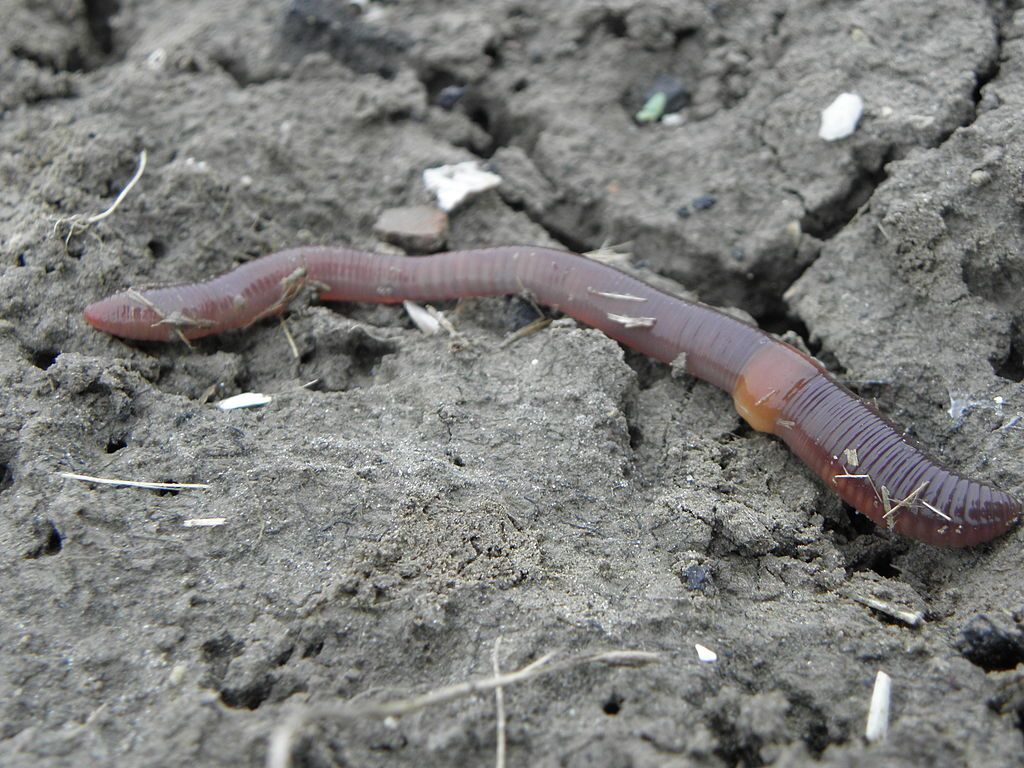29 May 2019
Have you encountered incredibly energetic earthworms in your garden that thrash violently when you touch them? Do they break off their own tails to escape? If so, your garden is probably home to a new invasive species: the Asian jumping worm (Amynthas spp).

Asian jumping worms resemble the European earthworms that live nearly everywhere in the U.S. and are appreciated in gardens and compost heaps because they mix the soil (though they cause trouble in northern forests).
The European species arrived in North America in the 1600’s in root balls and ballast. Here’s a photo of one species, Lumbricus terrestris, that we find on sidewalks on rainy days.
Asian jumping worms (Amynthas spp) are relatively new to North America. Imported accidentally in potted plants in the late 1800s, they spread in the soil of shared garden plants, shared compost, and as discarded fish bait.
The jumping worms’ lifestyle causes problems. They move fast, writhe and thrash, reproduce prolifically, and can live in higher densities than European earthworms. Instead of mixing the soil they live on the surface, devouring all the leaf litter and flooding the soil with nutrients that quickly wash away. When they invade the forest, the soil becomes barren and no plants grow. This 3-minute video shows why Asian jumping worms are so bad in our forests.
Asian jumping worms are in the Pittsburgh area but most of us don’t realize it. I remember finding crazy writhing earthworms while weeding my front garden several years ago and watching robins struggling to hold them. I didn’t know the worms were something new until Master Gardener Dianne Machesney gave a presentation about them at Wissahickon Nature Club.
As awareness grows about Asian jumping worms, garden clubs have stopped sharing plants in the traditional way. Dianne told us that her own garden club and the Master Gardeners Plant Sale specified that donated plants must be cleansed of dirt and re-potted in store bought soil.
Does your garden have these worms? Penn State Extension describes how to find out:
How do you know if you have Asian earthworms? Scratch the upper surface of the soil in your garden. If you uncover many worms writhing and twisting like snakes, you most likely have Asian earthworms. These worms, which can reach 6 inches in length, are much more active than European earthworms.
The clitellum–the prominent band around the body of the earthworm–is also different. On a jumping worm, the band completely encircles the body and is creamy white to light gray. In comparison, the clitellum of European earthworms does not wrap entirely around the body and is slightly raised.
from “Look Out for Jumping Earthworms” by Penn State Extension
Read more about Asian jumping worms at Penn State Extension, Cornell Extension and Great Lakes Worm Watch (whose photo of the worm is at top).
Watch them writhe in this short video from Wisconsin.
(photo of Asian jumping worm from greatlakeswormwatch.org brochure, photo of European earthworm from Wikimedia Commons)

Off topic: Where are the falconets? Did they fall off the box?
They didn’t fall off. They are ledge-walking. They intentionally explore out of camera view (from last year): https://www.birdsoutsidemywindow.org/2018/05/21/theyre-all-off-camera/
We live out side Scranton PA. This year our yard is infested with them. We don’t know how to get rid of them. The forest surrounds our property.